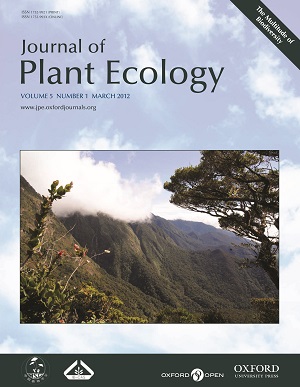Current Issue
-
 Volume 5 Issue 1
Volume 5 Issue 1
A diverse tropical forest at Kinabalu National Park in Borneo. Neutral models are designed to explain tree diversity in tropical forests, but are typically only fitted to data for individuals above an arbitrary threshold diameter. A paper in this issue investigates the sampling biases related to this approach, and shows how problems can be solved by introducing a simple age structure into neutral models.
IF: 3.9
CiteScore: 5.7
CiteScore: 5.7
Editors-in-Chief
Yuanhe Yang
Bernhard Schmid
Yuanhe Yang
Bernhard Schmid
CN 10-1172/Q
ISSN 1752-9921(print)
ISSN 1752-993X(online)
ISSN 1752-9921(print)
ISSN 1752-993X(online)







